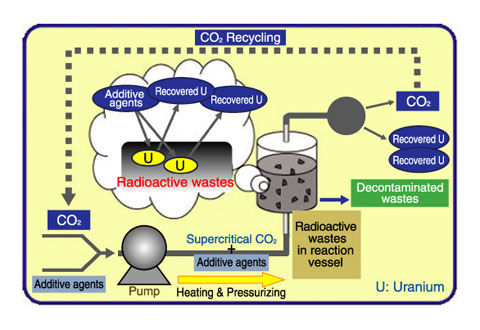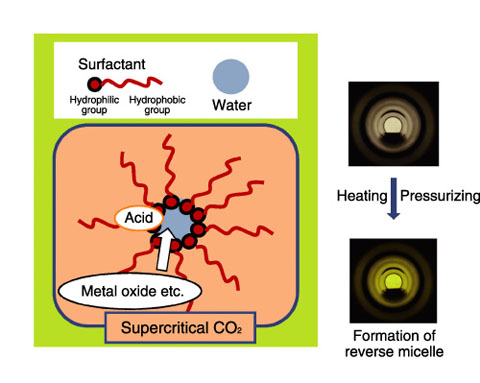
Fig.9-4 Process of decontamination using supercritical fluid

Fig.9-5 Diagram of a reverse micelle in supercritical carbon dioxide
In order to reduce the cost of radioactive waste management and improve the safety of radioactive waste disposal, it is necessary to reduce the quantity of radioactive waste. Therefore, we develop a technique to remove radioactive nuclides from the waste.
One of the requirements for a decontamination technique is that it should be possible to control the generation of secondary wastes produced during decontamination. We transform carbon dioxide (CO2) into the supercritical state from the gaseous state by pressurizing and heating it and use the supercritical CO2 as the separation medium. If supercritical CO2 is transformed to gaseous CO2, it almost loses its capability to dissolve a substance, and decontaminated substances are easily separated from the CO2. In this process, CO2 does not add to the waste, and the amount of secondary wastes can be greatly reduced. We have already succeeded in decontaminating uranium by using the CO2 soluble complex of tri-n-butyl phosphate and nitric acid as an additive agent (Fig.9-4). However, additive agents, especially those with high reactivity, that can dissolve in supercritical CO2, are limited, and therefore, it is difficult to apply this technique to the decontamination of plutonium oxide, which is a very stable compound.
We developed a technique to form reverse micelles in supercritical CO2. The technique involves the use of a surfactant and increases the reactivity of the supercritical CO2 by introducing the additive agent. Here, the reverse micelle has a spherical structure containing a small water particle wrapped by the hydrophilic group of the surfactant molecules, and the hydrophobic group is located far from the water particle (Fig.9-5). We examined several surfactants and succeeded in forming reverse micelles containing water, which dissolved nitric acid and metal salts, in supercritical CO2. Moreover, it was found that the polarity of the hydrophilic group of the surfactant and the size of the hydrophobic group are important factors influencing the formation of stable reverse micelles. We succeeded in dissolving europium oxide in supercritical CO2.
It was thus observed that the new decontamination technique, in which reverse micelles in supercritical CO2 were used as a reaction field, showed promise. We shall continue to improve the technique by performing detailed investigations of surfactants and experimental conditions so that it can be used for decontaminating radioactive wastes contaminated with plutonium.